After months of rumors, endless speculation, data on transfers, the iPhone X went on sale. The developers claim to have completely changed the look of the iPhone 10 years after the first model appeared. This means that some fundamental aspects of the iPhone have changed, including the removal of the Home button and fingerprint reader, replaced by a new navigation system with gestures and Face ID. The facial recognition system has become one of the major changes.
Today we offer a full review of the iPhone X in Russian. Video, photo and description of the revolutionary novelty.
New iPhones and their changes tend to get a lot of attention, this time even more attention than usual given the unusually high starting price. Over the past few years, we've seen constant variation on the "new iPhone" theme when it wasn't really new at all. Now Apple is opening the second decade countdown. The iPhone X should be more than just a new iPhone. This model becomes the basis for a new generation of devices, therefore expectations are higher than ever.
Apple is asking users to change the habits they have developed over the past 10 years. Big changes come with great risks.
Design
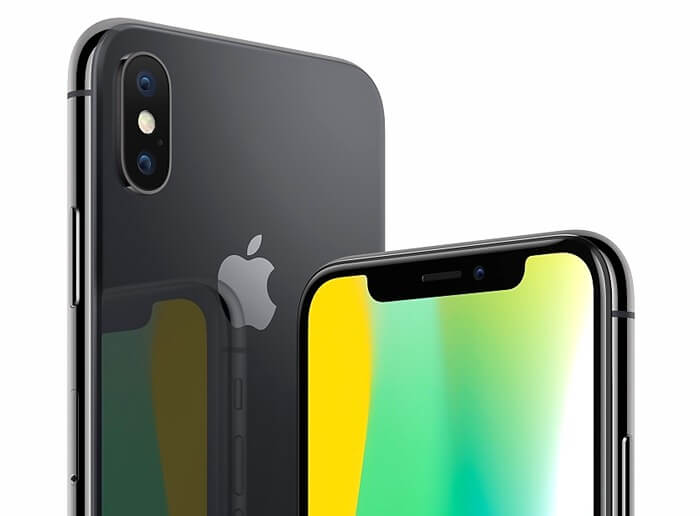 At first glance, the device looks futuristic. It seems polished to a shine, thoughtful and well-realized. The developers transferred all the text from the corpus to the software, leaving only the word "iPhone" behind. The screen is bright and colorful, with pixels at the very top of the screen. The device looks like a 3D model, not a real device.
At first glance, the device looks futuristic. It seems polished to a shine, thoughtful and well-realized. The developers transferred all the text from the corpus to the software, leaving only the word "iPhone" behind. The screen is bright and colorful, with pixels at the very top of the screen. The device looks like a 3D model, not a real device.
Yet this is a real device that was not easy to create. Despite the magnificent appearance, it was not without its drawbacks. There is a tiny sharp protrusion between the glass back and the chrome bezel that you feel every time you pick it up. It seems that this frame will scratch and get dents. The camera overhang on the back is huge, larger than on the iPhone 8 Plus as it fits into a more compact body. Some people will probably think it's ugly.
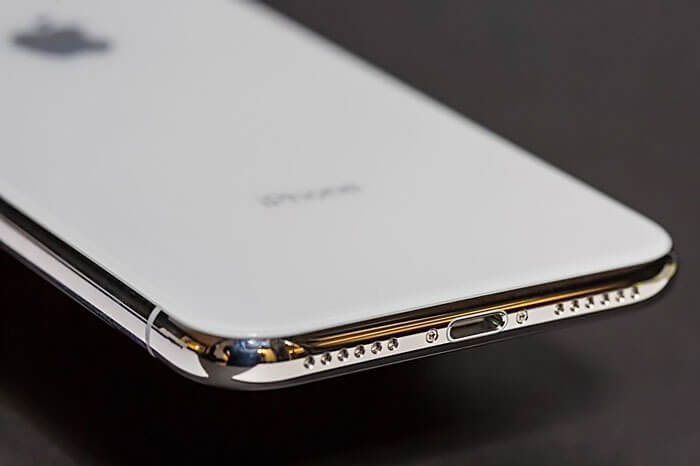 There is no headphone jack, like many other modern smartphones. This is the price for a bezel-less screen with a notch at the top. Along the edges there is a volume control, a mute and power button. The removal of the Home button means there are several new button combinations to remember. The volume rocker up and the power button allow you to take a screenshot. If you hold down the power button, Siri opens. The smartphone is turned off by holding the volume control and the power button simultaneously for a few seconds.
There is no headphone jack, like many other modern smartphones. This is the price for a bezel-less screen with a notch at the top. Along the edges there is a volume control, a mute and power button. The removal of the Home button means there are several new button combinations to remember. The volume rocker up and the power button allow you to take a screenshot. If you hold down the power button, Siri opens. The smartphone is turned off by holding the volume control and the power button simultaneously for a few seconds.
Apple provided a white and a silver model for review. The developers claim that the surface is tougher than stainless steel, but scratches and dents have already appeared. For this reason, it is advisable to use a cover.
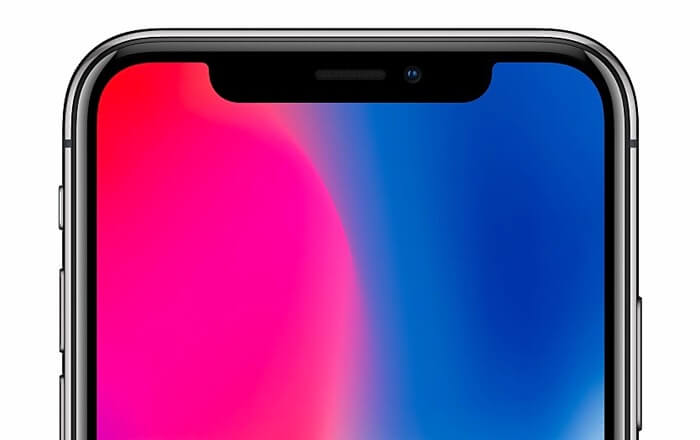 Noteworthy is the camera cutout inside the screen. He looks ugly, but disappears in a portrait position. In landscape mode, the notch feels intrusive and ruins the viewing experience. You can also say that the bezels at the edges and at the bottom of the screen are quite large. Many people do not like them, but against their background, the color seems even more saturated. It's a very different design compared to the curved edges of the screens like Samsung.Apple specifically emphasizes that the small bezels remain.
Noteworthy is the camera cutout inside the screen. He looks ugly, but disappears in a portrait position. In landscape mode, the notch feels intrusive and ruins the viewing experience. You can also say that the bezels at the edges and at the bottom of the screen are quite large. Many people do not like them, but against their background, the color seems even more saturated. It's a very different design compared to the curved edges of the screens like Samsung.Apple specifically emphasizes that the small bezels remain.
The design can be called a step forward from the look that appeared in the iPhone 6 and remained for several years. The elegance spoils the camera cutout.
Screen
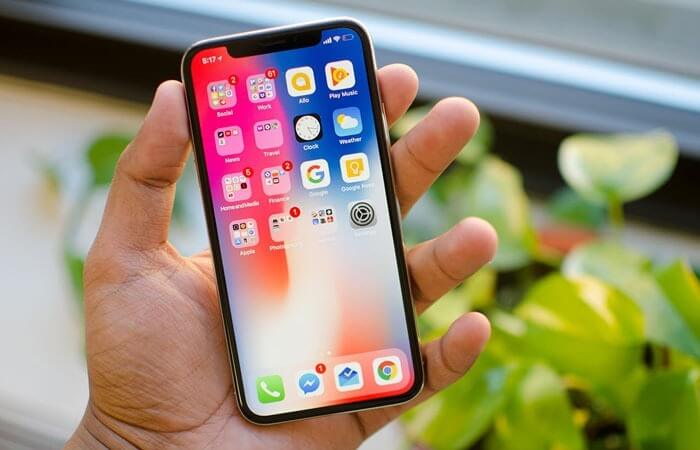 This is the first time iPhones are using an OLED screen, while earlier Apple favored LCDs. OLED allows for thinner smartphones, but it is difficult to provide accurate color reproduction on them. Samsung phones are often oversaturated, the Pixel XL 2 has problems with viewing angles and subdued colors, and the LG V30 has uneven backlighting.
This is the first time iPhones are using an OLED screen, while earlier Apple favored LCDs. OLED allows for thinner smartphones, but it is difficult to provide accurate color reproduction on them. Samsung phones are often oversaturated, the Pixel XL 2 has problems with viewing angles and subdued colors, and the LG V30 has uneven backlighting.
Apple is using Samsung's 5.8-inch OLED screen, which was specially made for the iPhone X. The screen is larger than the 5.5-inch iPhone 8 Plus, while the screen is longer and does not seem as large. The iPhone X is more of a larger iPhone 8 than a smaller iPhone 8 Plus that feels in the hand. This is similar to the transition from iPhone 4 to iPhone 5, where the screen is slightly longer. When you run apps that are not optimized for the iPhone X, they have borders around the edges and everything looks exactly the same as on the iPhone 8.
 Using a PenTile pixel arrangement, each pixel shares a common red, green, and blue subpixel, unlike previous iPhone LCDs which had dedicated RGB subpixels for each pixel on the screen. Many people don't like PenTile screens, but looking at the iPhone X, hardly anyone will say that this particular technology is used. The developers apply anti-aliasing and display of subpixels to improve the quality of the picture.
Using a PenTile pixel arrangement, each pixel shares a common red, green, and blue subpixel, unlike previous iPhone LCDs which had dedicated RGB subpixels for each pixel on the screen. Many people don't like PenTile screens, but looking at the iPhone X, hardly anyone will say that this particular technology is used. The developers apply anti-aliasing and display of subpixels to improve the quality of the picture.
The screen is great anyway. It is bright, clear, saturated, it is pleasant to look at it. Compared to the iPhone 8, the colors are cooler and softer, which makes it more comfortable to watch over long periods of time. There is Apple's True Tone system, which automatically changes the color of the screen depending on the ambient light. However, the colors here differ from the iPhone 8. Perhaps the 10-channel light sensor here is more accurate than the 4-channel on the iPhone 8.
 Apple prides itself on Dolby Vision HDR support, which makes HDR-enabled iTunes movies brighter and wider dynamic range, but the difference is tricky to see.
Apple prides itself on Dolby Vision HDR support, which makes HDR-enabled iTunes movies brighter and wider dynamic range, but the difference is tricky to see.
The screen isn't exactly perfect: All OLED displays are color-shifting and the iPhone X is no exception. The screen has a bluish tint when you tilt the smartphone back and forth. However, there is no problem with the Pixel 2 XL, where there is a blue tint with any movement of the smartphone in hand.
Many people ask about burnout, while there were no such problems. The developers claim that they have tried to solve this problem in the long term. Every OLED screen sooner or later starts to suffer from burn-in, so you need to wait a few years.
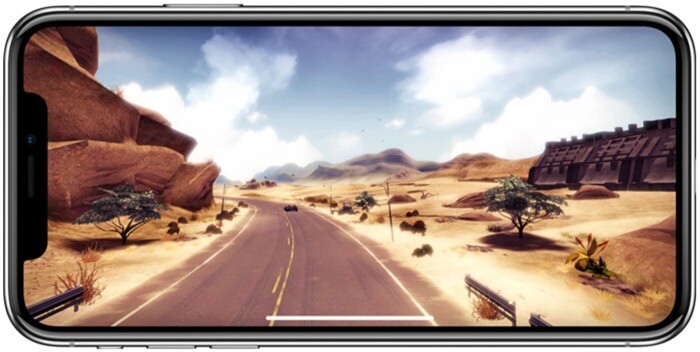 At the top of the screen is the camera cutout. Application developers will have to do some work to make the content adapt to it. Most apps don't use the entire screen space right now.
At the top of the screen is the camera cutout. Application developers will have to do some work to make the content adapt to it. Most apps don't use the entire screen space right now.
We can say that non-updated applications have a programming framework. They have large black bars at the top and bottom, making the smartphone look like an iPhone 8. Apps include Google Maps and Calendar, HBO Go, Delta, Spotify, and many more. Games like CSR Racing and Sonic The Hedgehog look especially silly, as the Home bar at the bottom of the screen glows white in this mode.
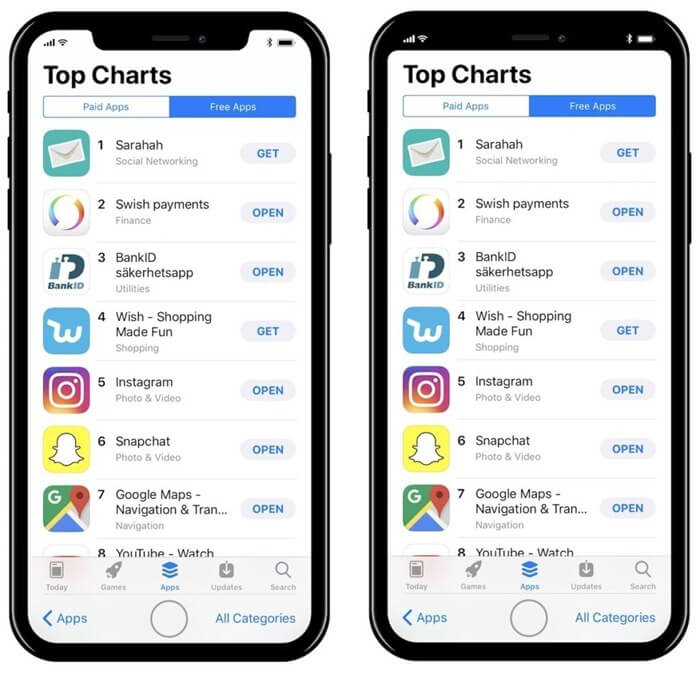 Apps that have not been updated for the iPhone X use the iOS automatic layout system to fill the screen, but issues occasionally occur. Dark Sky blocks half of the status bar with its own black bar, Uber places an account icon over the battery meter, Instagram's volume bar is completely covered by the camera cutout.
Apps that have not been updated for the iPhone X use the iOS automatic layout system to fill the screen, but issues occasionally occur. Dark Sky blocks half of the status bar with its own black bar, Uber places an account icon over the battery meter, Instagram's volume bar is completely covered by the camera cutout.
The updated apps show different ways to work around the notch, which sometimes leads to strange results, especially in video players. YouTube has only two full-screen display options, so watching the trailer for The Last Jedi takes place either in a small window or in full screen when it crawls out to close the left side of the video.Netflix does a little better as it mostly plays 16: 9 videos, but you still have to choose between a notch and big black bars around the edges.
Landscape mode on the iPhone X is also a chaos. The notch is no longer an invisible element at the top of the status bar and is a big problem on the side of the screen. None of the applications have yet been able to adequately get out of the situation. The home bar at the bottom of the screen is often on top of the content.
Over time, all this can be resolved, but recent history suggests that this time will not be the shortest. You can still find applications that have not been updated to fit the larger screen size of the iPhone 6. 3D Touch has been around for several years, but there are programs that do not use this technology. Apple is providing developer training and auto-positioning tools to accelerate the transition to iPhone 6 size.
Cameras
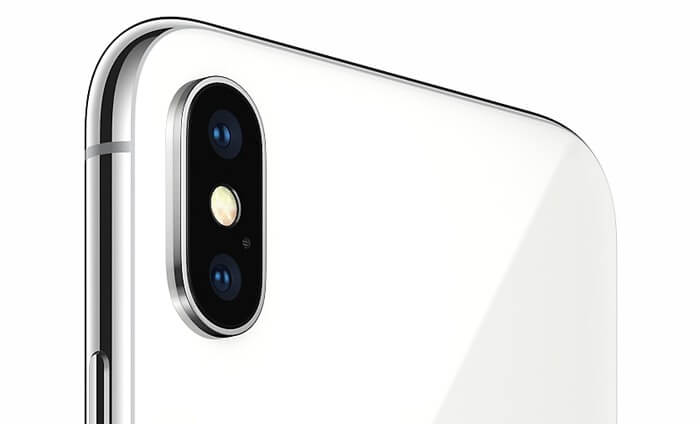 The iPhone X and Pixel 2 smartphones are now on sale, so you can compare their cameras in detail. The camera on the iPhone X is almost the same as on the iPhone 8, the photos are the same. We can say that the quality of the photos is higher on the Pixel 2 XL.
The iPhone X and Pixel 2 smartphones are now on sale, so you can compare their cameras in detail. The camera on the iPhone X is almost the same as on the iPhone 8, the photos are the same. We can say that the quality of the photos is higher on the Pixel 2 XL.
![]() On the back of the iPhone X are two 12MP cameras, each with OIS. One has f / 1.8 wide-angle lenses, the other f / 2.4 telephoto lenses. This is an upgrade from the iPhone 8 Plus, where the f / 2.8 secondary camera lacks OIS. The result is some of the best zoom photography in smartphone history. You can shoot great videos up to 6x in 4K. There are questions about slow flash, but these are minor issues. You should try to avoid using flash whenever possible.
On the back of the iPhone X are two 12MP cameras, each with OIS. One has f / 1.8 wide-angle lenses, the other f / 2.4 telephoto lenses. This is an upgrade from the iPhone 8 Plus, where the f / 2.8 secondary camera lacks OIS. The result is some of the best zoom photography in smartphone history. You can shoot great videos up to 6x in 4K. There are questions about slow flash, but these are minor issues. You should try to avoid using flash whenever possible.
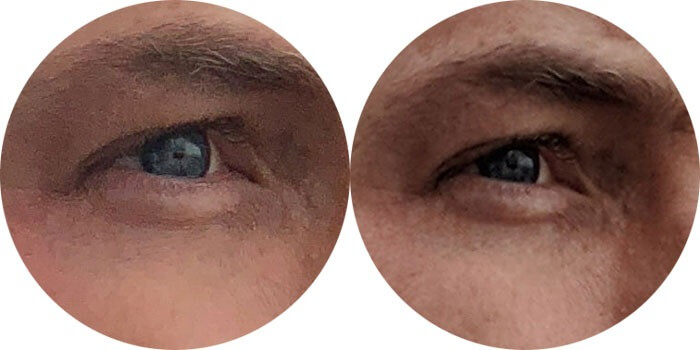
Having two cameras on the back allows you to take portrait photos, which are also found on the iPhone 8 Plus. There is also a Portrait Lighting shooting mode. Another difference with the iPhone X is that there are these modes on the front camera as well.
The stock photos on the iPhone X are good, some are excellent. Still, the Pixel 2 XL produces more memorable images with more contrast and better HDR performance. The iPhone's dual rear cameras do better at taking photos in portrait mode, but the Pixel produces the best portrait images from the front camera. The Galaxy Note 8 cannot be compared to these two smartphones: Samsung smooths the image too aggressively and the detail in low light is not so high.
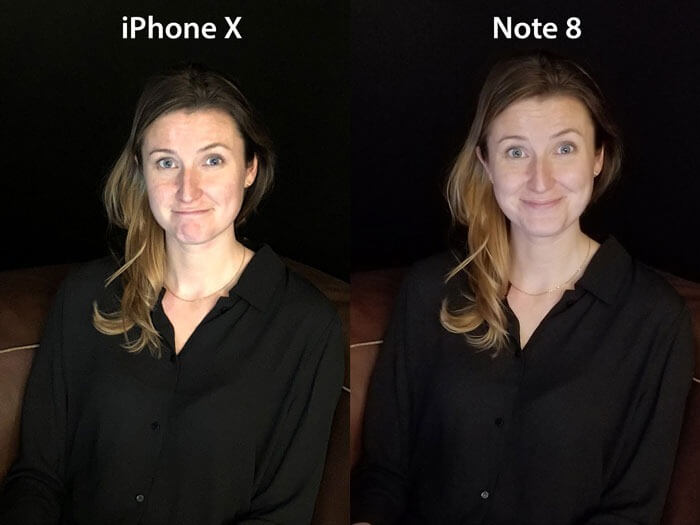
Which of the two smartphones to choose for photography depends on personal preference and how much zoom you need.
The front camera has animoji, that is, animated emoticons. The technology works extremely clearly, tracking your facial expression and capturing voice that syncs with the animation. Animoji work with a TrueDepth IR infrared camera and a point projector. There is no depth camera or safety mechanisms, just the movement of muscles in the face is monitored. Problems can only be with blinking, but Apple promises to solve them in the future.
 Apple has brought a lot of weird additions to the iMessage app over the years, and Animojis are poised to be the next one. This program remains a shining example of the closed nature of the platform, but these smilies are cross-platform and can be sent as video via MMC and exported to MOV files.
Apple has brought a lot of weird additions to the iMessage app over the years, and Animojis are poised to be the next one. This program remains a shining example of the closed nature of the platform, but these smilies are cross-platform and can be sent as video via MMC and exported to MOV files.
Face recognition (Face ID)
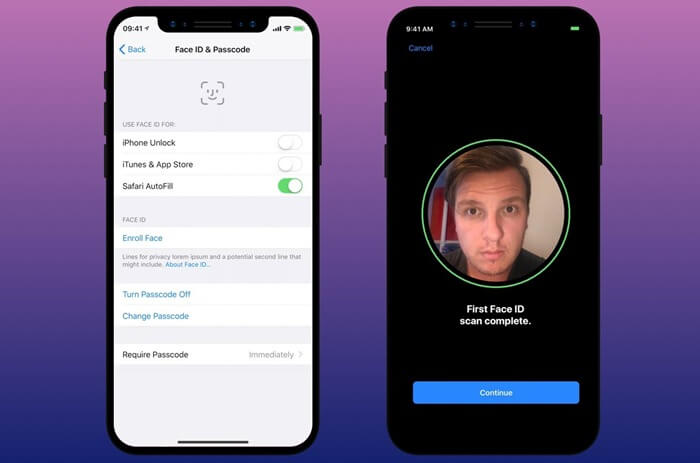 The most important functional innovation in the iPhone X is the Face ID system, which will let you into the system instead of a fingerprint scanner. All design and interaction with the iPhone X is built around this system. Because of it, there is no Home button and Touch ID fingerprint scanner. The recognition sensor is located inside the cutout, and it is for this sensor that this cutout exists. The payment system has been changed to interact with Face ID. Animoji also work with these sensors.
The most important functional innovation in the iPhone X is the Face ID system, which will let you into the system instead of a fingerprint scanner. All design and interaction with the iPhone X is built around this system. Because of it, there is no Home button and Touch ID fingerprint scanner. The recognition sensor is located inside the cutout, and it is for this sensor that this cutout exists. The payment system has been changed to interact with Face ID. Animoji also work with these sensors.
The good news is, more often than not, Face ID works great. The bad news is that sometimes the system does not work and you have to bring the device closer to your face.
You can take a cheap night-time camcorder and see how Face ID works. The iPhone X has an infrared sensor, a dot projector and an infrared camera, all of which are in the notch at the top of the screen. This set resembles an Xbox Kinect controller. The camera takes a 2D photograph, which turns into a mathematical model with image depth, sends this model to the authorization chip to compare with the stored value. If there is a match, the device will be unlocked.
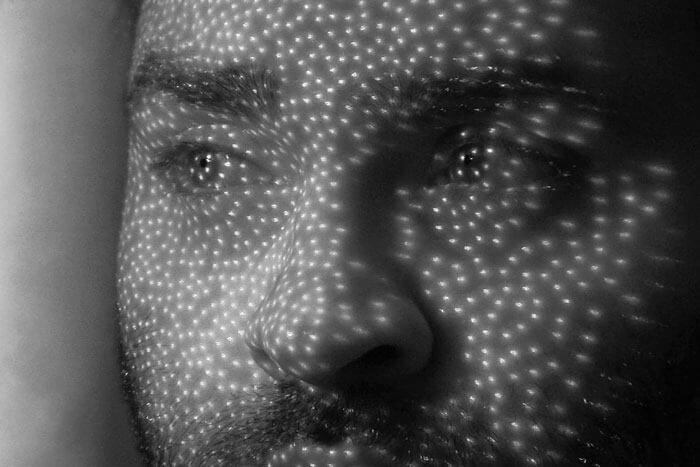 Setting up Face ID is easy, even faster than setting up the Touch ID fingerprint reader on previous iPhones. The screen displays a circle with a face, you rotate the face until all the stripes of the circle turn green. You have to do it twice. In theory, over time, the system will recognize your face better, track changes like beard, etc. However, significant changes may require entering a pin code.
Setting up Face ID is easy, even faster than setting up the Touch ID fingerprint reader on previous iPhones. The screen displays a circle with a face, you rotate the face until all the stripes of the circle turn green. You have to do it twice. In theory, over time, the system will recognize your face better, track changes like beard, etc. However, significant changes may require entering a pin code.
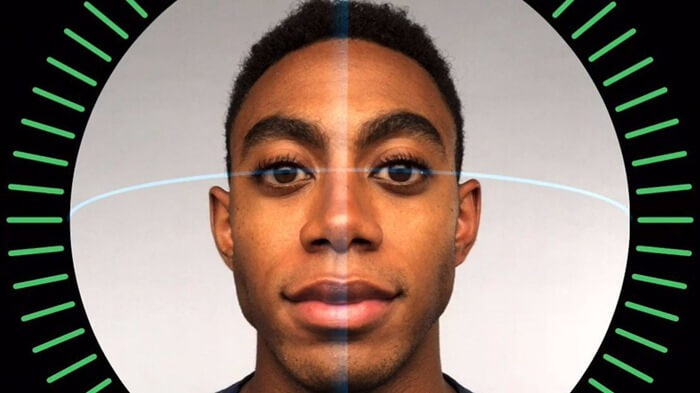
Face ID will even work with most sunglasses that transmit infrared light. If you try to disguise yourself, the system may not work, but it is better than if someone tries to impersonate you and log in.
Early tests showed that Face ID performed well indoors. You need to look into the camera with an open face. If you are sitting at a desk, you need to pick up your smartphone and bring it to your face, which takes more time than just putting your finger on the scanner.
You need to act carefully, the best unlocking occurs from a distance of 25-50 cm from the face. This is closer than usually the device is brought when they take it out of the pocket to look at it, so you need to purposefully bring it to your face.
This is a small problem and you can get used to it. Many questions were connected with working in the dark, but no difficulties arose. An infrared projector is like a flashlight that allows you to see in the dark. But if you go out into the bright sun, which contains a lot of infrared light, or under poor fluorescent lamps that overlap the infrared sensor, the system will become unstable. Apple says you need to keep the phone close to your face in certain lighting conditions. You cannot unlock the device in landscape mode when the face is upside down, in which case you need to enter the pin code. If you are one of those who like to view notifications when communicating with people, this will be noticeable, since notifications are not displayed in full on the locked screen and you have to pick it up and unlock it.
Many people wonder about confidentiality. Face ID does not take or store photos of your face. The regular front camera is only used during setup so you can see yourself. An infrared image is used to create a depth map that is compared to a sample. Nothing is sent to Apple servers, only numbers are stored in the protected part of the processor. Of course, any system can be hacked, but don't think that photos will be sent to iCloud or somewhere else. If you weren't worried about Touch ID, you shouldn't worry now.
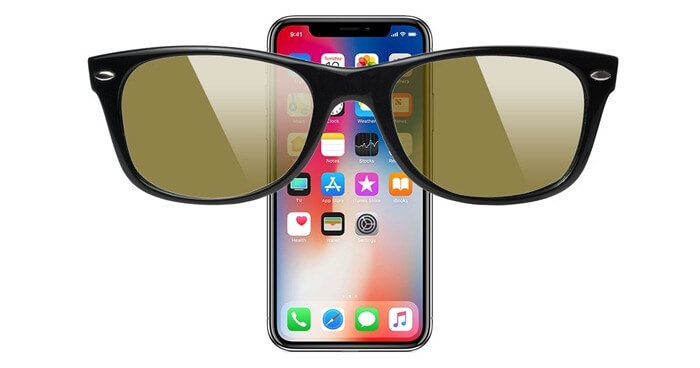 The speed of work is different. In most cases, in good lighting conditions, recognition works quickly. You need to take the device in hand, make a gesture upward and you are already inside. In other cases, you will have to wait a second, usually in low light.
The speed of work is different. In most cases, in good lighting conditions, recognition works quickly. You need to take the device in hand, make a gesture upward and you are already inside. In other cases, you will have to wait a second, usually in low light.
The hassle will be about the same as with a fingerprint scanner. Sometimes the finger is wet and you need to enter a pin code, but here sometimes there is poor lighting, you need to bring the smartphone closer to your face and wait.
You can use Face ID to work with the Apple Pay payment system, and it's very simple: you need to double-click the side button, go through authorization and hold the smartphone to read the barcode. Here you deliberately turn on the payment system, and do not just bring the device to the card reader and wait for it to work.
Face ID is a great replacement for Touch ID. There will be situations where you will need to hold your smartphone correctly and try several times. Apple's latest products force people to adapt to them, not the other way around, even at $ 1,000.
Software
The smartphone has many new components, but it runs on the same iOS 11 system, with a few changes due to the lack of a Home button.We'll have to learn new navigation gestures.
 A gesture from the bottom up opens the home screen, gestures down to the right opens the control center, down to the left opens the notification panel. There are buttons for the flashlight and camera. They require 3D Touch to function, so they feel like real buttons. This is the only place in the system where 3D Touch works like clicking the left mouse button instead of the right one. This shows how fuzzy iOS has become in terms of basic interface interactions.
A gesture from the bottom up opens the home screen, gestures down to the right opens the control center, down to the left opens the notification panel. There are buttons for the flashlight and camera. They require 3D Touch to function, so they feel like real buttons. This is the only place in the system where 3D Touch works like clicking the left mouse button instead of the right one. This shows how fuzzy iOS has become in terms of basic interface interactions.
If you want to switch between apps, you can swipe down from the bottom of the screen or up and hold. There will be a slight tactile response and an application switcher will appear on the screen. It will take a couple of minutes to figure out how it is more convenient to perform this action.
 Reachability moves the top of the screen downward for easier one-handed reach. It's comfortable on the iPhone Plus and is on the iPhone X, you just need to master it. When the interface is moved down, you can swipe to any corner to open the Action Center or Control Center. You will often pull out the control center, since only here you can see the battery charge and Bluetooth status. Due to the camera cutout, there is not enough room for these objects in the top panel. It is not comfortable.
Reachability moves the top of the screen downward for easier one-handed reach. It's comfortable on the iPhone Plus and is on the iPhone X, you just need to master it. When the interface is moved down, you can swipe to any corner to open the Action Center or Control Center. You will often pull out the control center, since only here you can see the battery charge and Bluetooth status. Due to the camera cutout, there is not enough room for these objects in the top panel. It is not comfortable.
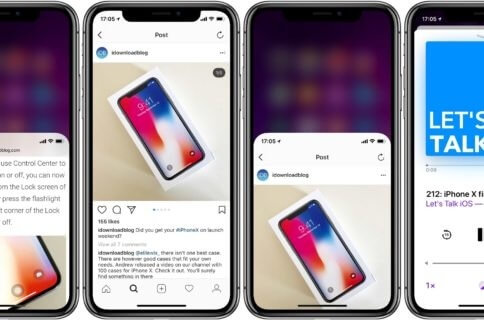 This is where the differences between iOS 11 for the iPhone X end, apart from various notch-related details. I wish Apple made notifications more useful. The home screen won't get in the way of customization options, as will the ability to install other mail apps and a web browser. Siri is the same.
This is where the differences between iOS 11 for the iPhone X end, apart from various notch-related details. I wish Apple made notifications more useful. The home screen won't get in the way of customization options, as will the ability to install other mail apps and a web browser. Siri is the same.
Autonomous work
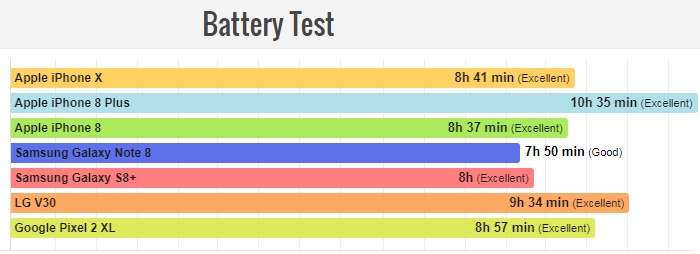 Battery life is typically two hours longer compared to iPhone 7... The OLED screen uses less power than the LCD, and the battery life on the iPhone 8 was good, with most of the same components.
Battery life is typically two hours longer compared to iPhone 7... The OLED screen uses less power than the LCD, and the battery life on the iPhone 8 was good, with most of the same components.
Release date and prices
 The official start of sales of the iPhone X in Russia began on November 3, 2017. The prices are as follows: from 87,900 rubles for the 64 GB version and from 113,000 rubles for the 256 GB version. The cost is indicated according to the Yandex Market service.
The official start of sales of the iPhone X in Russia began on November 3, 2017. The prices are as follows: from 87,900 rubles for the 64 GB version and from 113,000 rubles for the 256 GB version. The cost is indicated according to the Yandex Market service.
Conclusion
iPhone X is arguably the best iPhone ever. The device is thin, powerful, with ambitious camera and design ideas. Performance has increased significantly due to the new processor. All that remains is to figure out how Face ID works.
Pros:
- great screen;
- simple and effective Face ID system;
- auxiliary camera with optical stabilization;
- animoji.
Minuses:
- price;
- lack of application optimization;
- no headphone jack.
In terms of hardware, the iPhone X seems like a big step forward, but iOS 11 is still the same. This is the most expensive iPhone ever, but the price is too high. This is the price to pay for the new design.


I liked the review, it is brief, clear, informative. I immediately realized that this is the smartphone that I need.